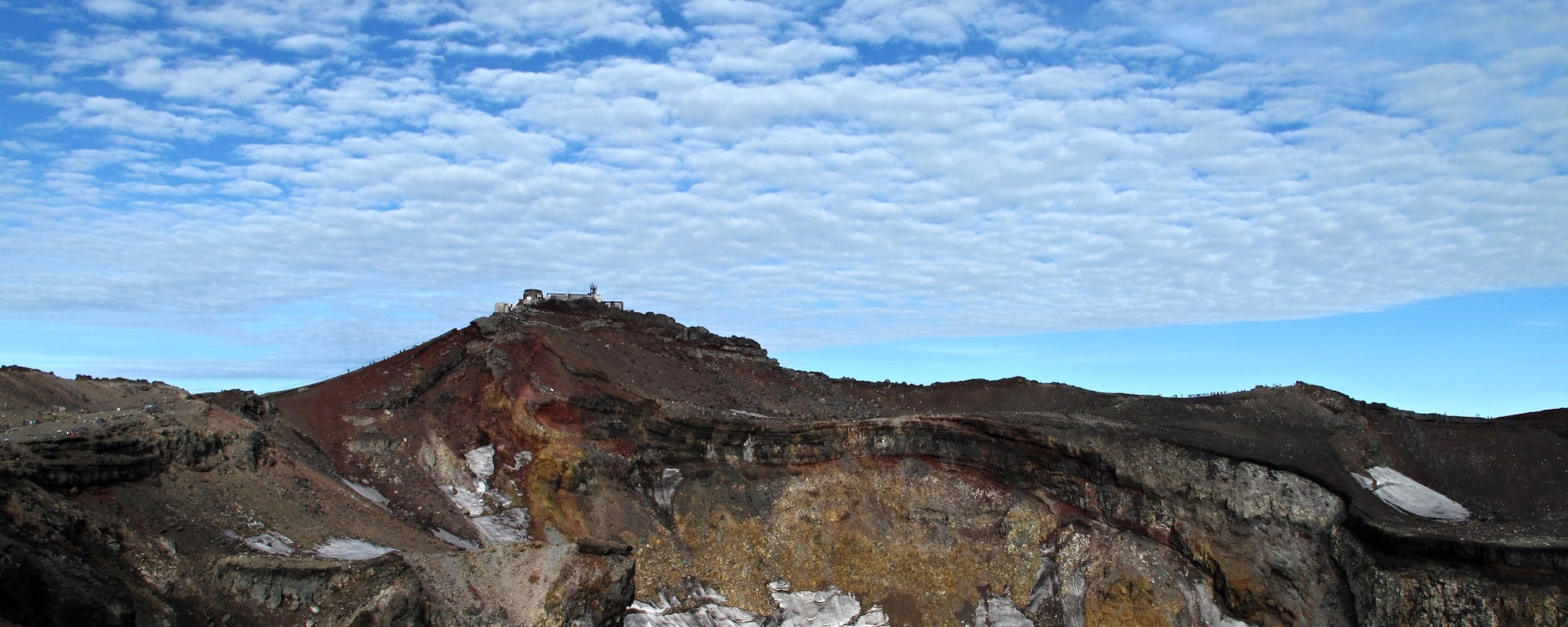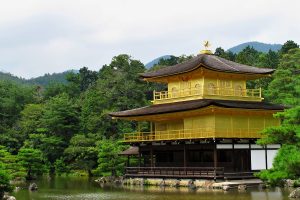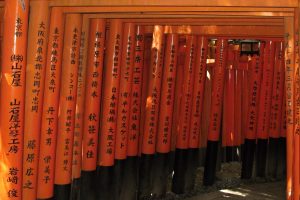Japan (and climbing Mount Fuji) had been on our bucket list for ages, so when we finally found cheap flights to Tokyo, we didn’t hesitate and booked them.
We like to enjoy outdoor activities while travelling if possible, and climbing the highest Japanese mountain, Mount Fuji, also known as Fuji-san (3,776 metres / 12,388 feet), became the trip’s highlight.
Its proximity to Tokyo (100 km / 62 miles) made planning and logistics easy.
Mount Fuji, which is an active volcano, and its well-known shape of a cone, is a symbol of Japan.
It’s also a World Cultural Heritage Site.
Thousands of climbers hike on this iconic mountain every year.
In Japan, they say that every Japanese person should climb Mount Fuji at least once in their lifetime – so why not join them?
When to Go
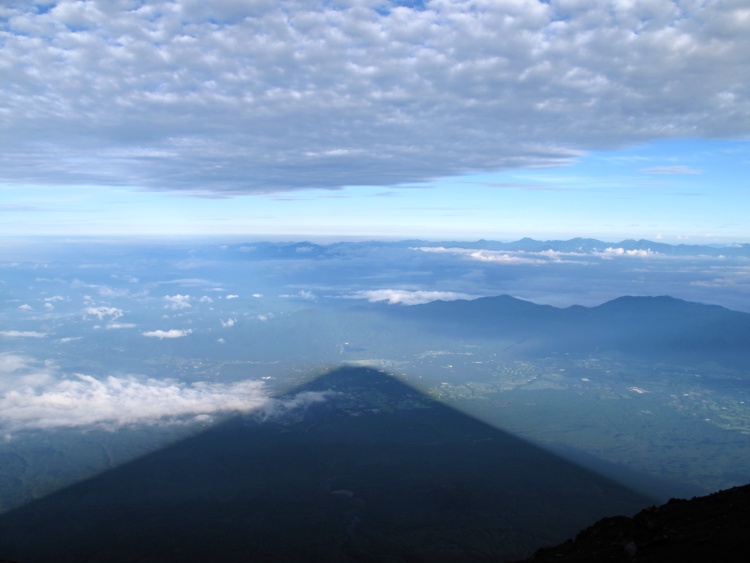
The primary climbing season is from early July to early September when the trails and mountain huts are in operation.
However, the dates vary every year, so check the official website when planning your trip.
Off-season climbing is prohibited because the weather gets unpredictable, and the trails, huts and all aid stations are closed, so there will be nobody to help you if you have any problems.
The mountain often gets crowded, especially during weekends and school holidays. You can find out online how busy the trails will be on the day of your climb.
We climbed Mount Fuji in mid-August, the busiest time of the year.
The path was congested in many parts, especially closer to the summit, and that’s why the climb took us much longer than we expected.
Mountain Trails
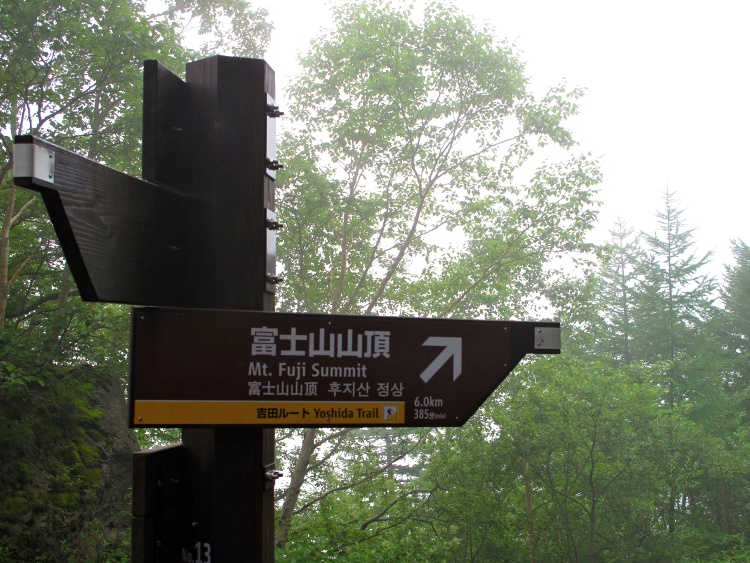
There are four mountain trails that you can choose from:
- Yoshida (yellow signs)
- Subashiri (red)
- Gotemba (green)
- Fujinomiya (blue)
Each of them is different, and you can find more details here.
The Yoshida Trail is the most popular – it’s the most easily accessible, there are the best facilities along the path, and the sunrise takes place on this side of the mountain.
The hiking distance from the Fuji-Subaru Line 5th Station to the summit of Mount Fuji is about 6 km (3,7 miles), and the hiking time is around 6-7 hours up and 3-4 hours down.
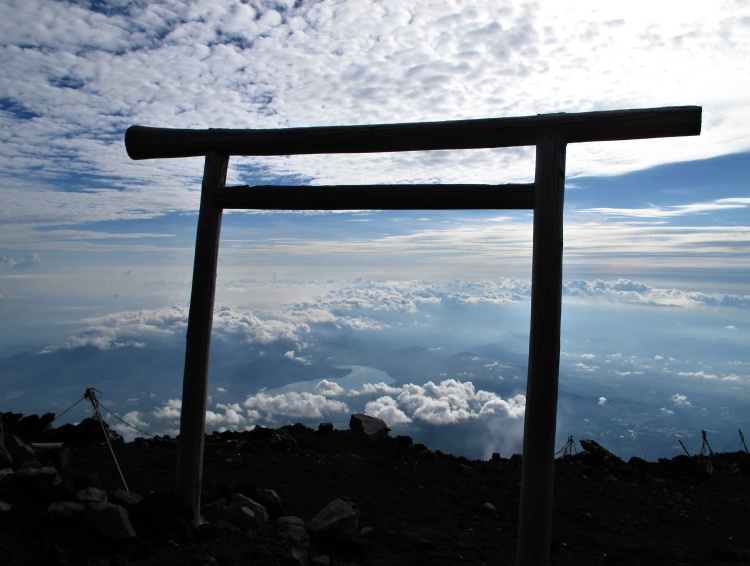
We decided on an overnight climb without resting (also called the bullet night climb) on the Yoshida trail because our time in Japan was limited, and we wanted to see as much as possible.
Also, we wanted to see the sunrise from the top of the mountain and avoid the day’s heat.
But many people still prefer to climb the mountain during the day because they don’t like the idea of hiking at night.
Also, the night climb is more difficult and tiring because you don’t get any rest overnight, so the decision is up to you.
We had already climbed many mountains before, but this was our first night climb – and it was a great adventure!
In this post, we will only talk about the Yoshida Trail because that’s the one we have experience with.
How To Get There
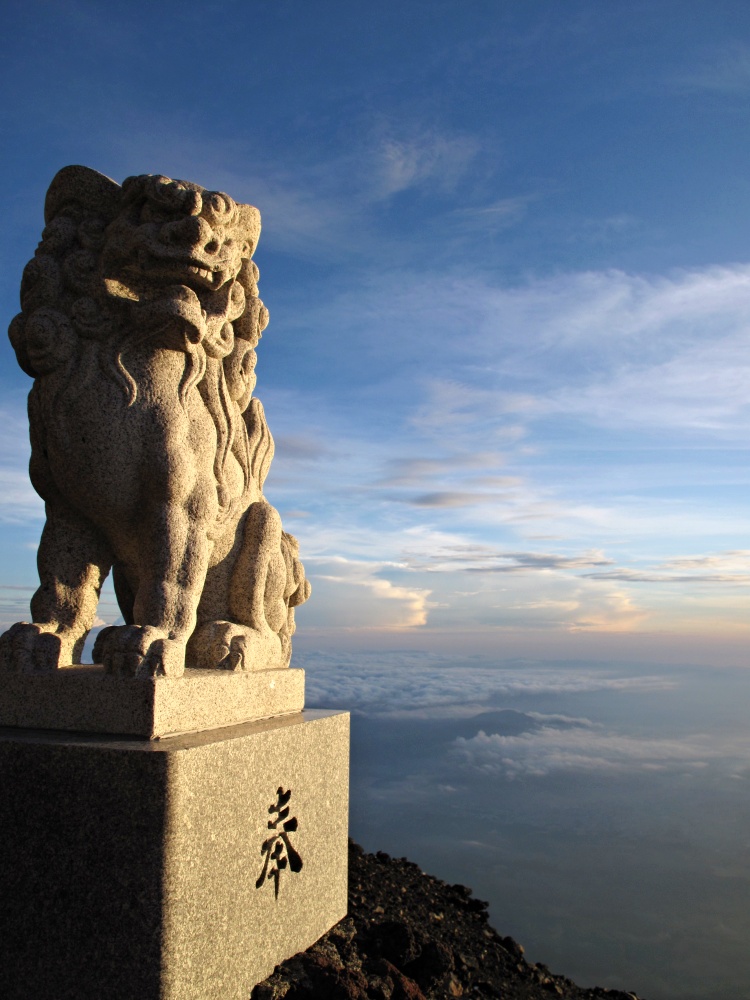
The most convenient (and cheapest) way to get to the starting point of the Yoshida Trail is to take the direct bus from the Shinjuku Station in Tokyo to the Fuji-Subaru Line 5th Station (also known as the Kawaguchiko 5th Station or the Yoshidaguchi 5th Station).
The buses operate a few times a day during the climbing season, and you can buy the tickets here.
Get Prepared
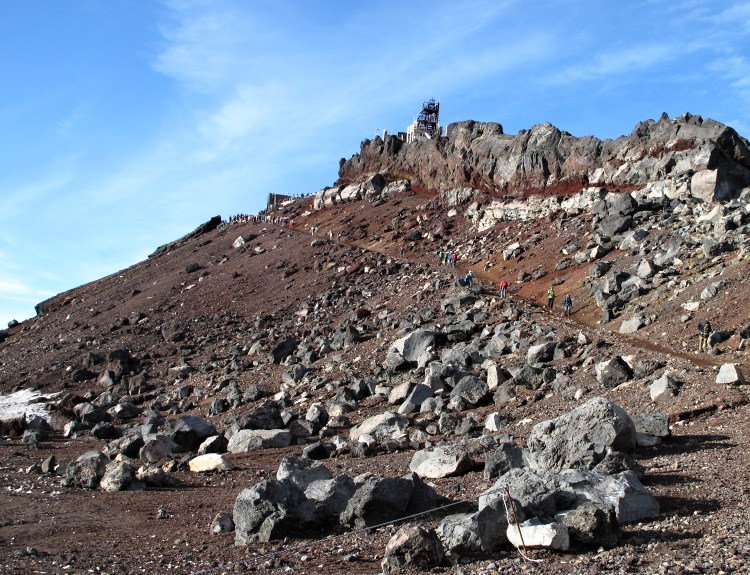
Mount Fuji is not an easy mountain to climb, and you should prepare for all types of weather, which can change at any time.
Some people might not deal well with the altitude of 3,776 metres / 12,388 feet, especially if they climb just in a day or overnight, because their body doesn’t get enough time to acclimatise to the elevation.
The most common symptoms of altitude sickness are a headache, nausea, fatigue, shortness of breath and dizziness, but it can become much more serious.
If you feel that it’s too much for you, you can stay in one of the mountain huts on the trail overnight to extend the climb to two days and acclimatise better.
It looks easy at first, but it’s a long and tiring climb, which you should prepare for.
Even if you are fit or experienced, it will likely take you longer than you expect because of the trail congestions, so it’s a good idea to be well equipped to be able to deal with the cold.
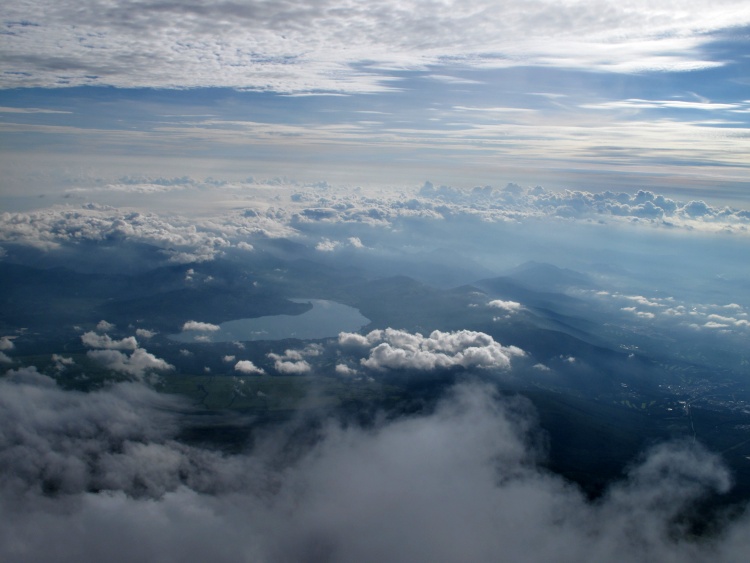
Our Recommended Gear List:
- Waterproof and windproof jacket and trousers
- Fleece jacket
- T-shirt
- Long thermal underwear
- Thick and warm socks
- Hiking shoes (Gore-Tex shoes worked fine for us)
- Face mask or scarf to cover your face during the descent on the dusty trail
- Headlamp or flashlight (we preferred a headlamp to keep our hands free during the climb)
- Food, snacks and drinks
- Hat, sunglasses, sunscreen
- Wet wipes
- Camera and other tech gear with extra charged batteries (they will exhaust fast in the cold)
- Trash bags to bring your trash back
- Walking poles if needed
- Cash because credit cards aren’t usually accepted in the mountain huts
- Coins for toilets, water and other small purchases
- Other items as per your preferences and needs
Climbing Mount Fuji at Night – Our Story
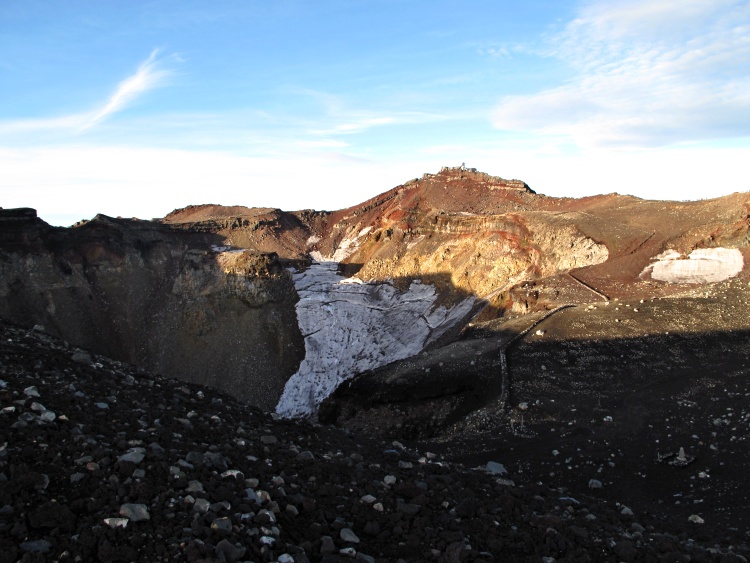
We were really busy on our trip to Japan, and we tried to squeeze in as much as possible because this wasn’t a cheap holiday.
Kat injured her leg while running before the trip, and it only got worse after so much walking every day while exploring Japan.
She ended up with both legs sore, and walking (especially downhill) became rather difficult for her.
But we couldn’t postpone our climb of Mount Fuji because we left it until the end of our holiday and we didn’t have any more time left in Japan.
Kat put on the two last kinesiology tapes her physiotherapist gave her.
The tapes supported her legs and relieved the pain temporarily, so she managed to climb the mountain in the end.
We arrived in Tokyo on the Shinkansen train from Osaka that evening, and we took the bus from the Shinjuku Station to the Fuji-Subaru Line 5th Station at 7.30 pm.
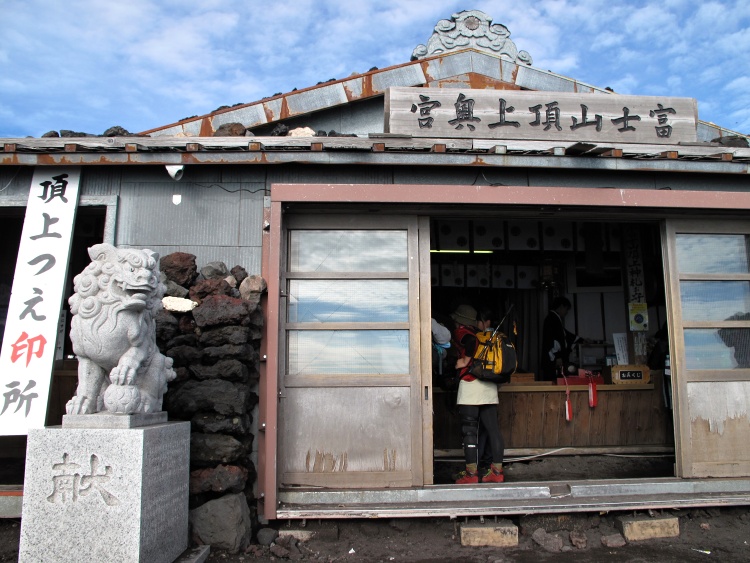
The Fuji-Subaru Line 5th Station (Altitude 2,300 Metres / 7,546 Feet) – The Starting Point
We arrived just before 10 pm, checked our gear and food, put the headlamps on and started hiking.
The trail began behind the huts, and it was clearly marked. We followed the easy flat road before we hit the slope and started the ascent.
We started strongly, full of energy and excitement because the path wasn’t very steep, and we saw even older people walking it.
The 6th Station (Altitude 2,390 Metres / 7,841 Feet)
It was just a short walk, and we continued to the next station after a quick break.
The trail got a little steeper, and the number of people kept increasing and overtaking them slowed us down.
The 7th Station (Altitude 2,700 Metres / 8,858 Feet)
The whole day spent exploring Osaka, together with the altitude, began taking its toll on us.
While we were having a snack, a group of Japanese guys arrived, and one of them was moaning a lot because he was already exhausted.
We had a little chat with him because he spoke English very well.
He told us that his friends convinced him to climb Mount Fuji for the second time.
He wasn’t much happy about it at the moment!
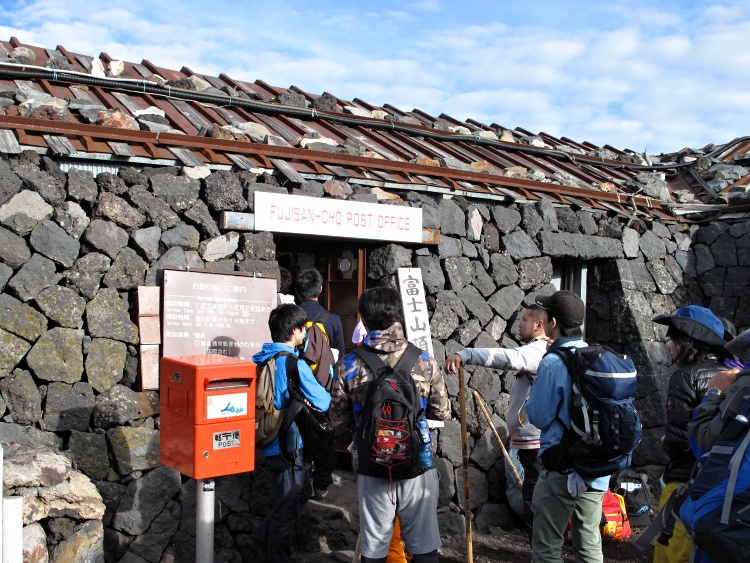
The 8th Station (Altitude 3,360 Metres / 11,024 Feet)
The hike to the 8th Station was long and exhausting.
Walking the zig-zag path on the rocky surface was getting more challenging because of the altitude, fatigue and the growing crowds.
There were a few huts between the 7th and 8th Stations, which were great for a break, but we preferred to continue walking to keep warm because the cold was getting under our skin.
The lack of sleep wasn’t helping either, as the dawn was approaching.
The 9th Station (Altitude 3,580 Metres / 11,745 Feet)
We were exhausted when we arrived at the 9th Station, and a headache caused by the high altitude kicked in.
It got freezing, but it was good because it kept us awake.
The trail got even more congested because many other people, who were staying in the mountain huts or had come from another route, now joined the crowds approaching the summit.
People were moving slowly, and it was impossible to overtake anyone as the path was too narrow.
We were getting really cold because of the slow walking pace, and we started to worry that we wouldn’t arrive at the summit on time and we could miss the sunrise.
But in the end, we arrived at the top, just when the sun began to rise.
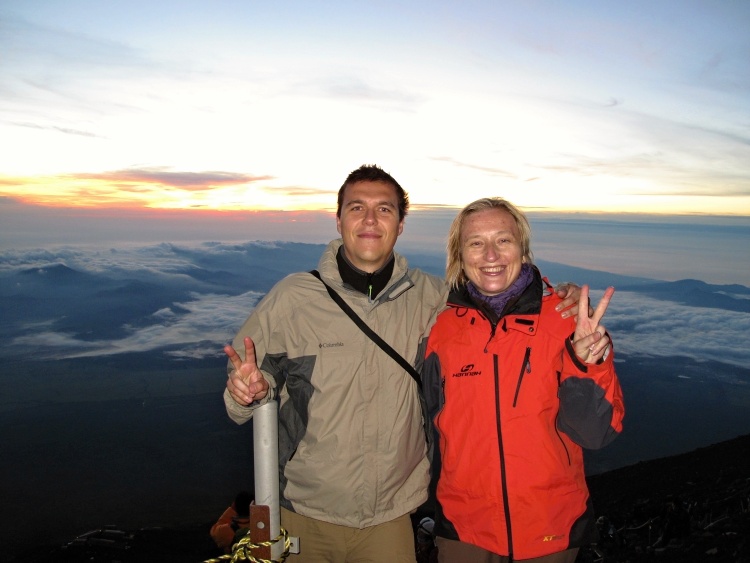
Summit of Mount Fuji (Altitude 3,776 Metres / 12,388 Feet) – We Made It!
After a long and tiring hike, we finally reached Mount Fuji’s summit.
We sat down and watched the sun rising while hundreds of other people were still coming up. After all the hard work, it was a fulfilling moment.
Our new Japanese friends also made it to the top, and we enjoyed the sunrise together.
The summit itself is beautiful, but it’s also fascinating to be standing on the top of an active volcano.
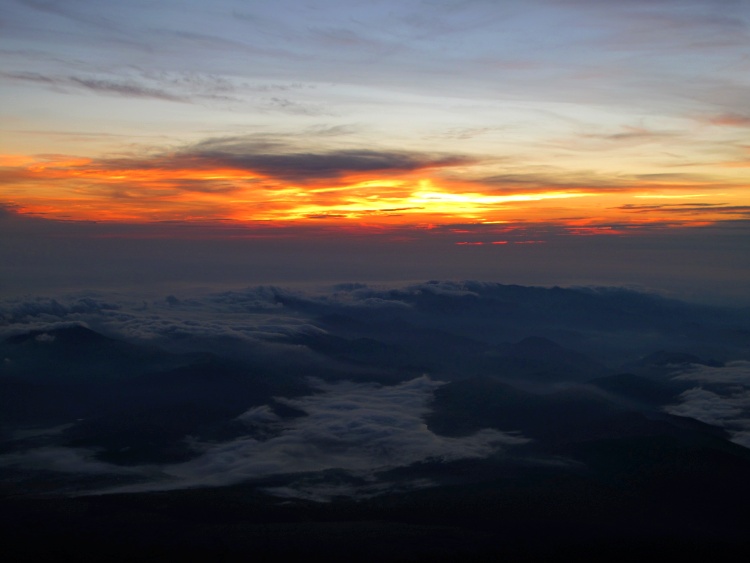
There are some basic facilities on the summit, and you can buy some items in a few mountain huts there, but the prices are high.
After having some rest and taking many photos of the incredible sunrise, we walked around the rim of the volcano.
There was still a bit of snow on the ground.
It was a nice walk, which took us about an hour, but we didn’t fully enjoy it because we were exhausted after the seven-hour climb. We could also feel the lack of sleep and the high altitude.
Many people were sitting around and resting, and Petr had to lie down for a while after he started feeling a little dizzy.
But we had our mission to accomplish – Kat promised her workmate, who collects stamps from all over the world, to post him a few postcards from this unusual location, so we had to make our way along the rim to the post office that is situated on the summit.
By the way, the postcards really got delivered and quite soon!
Descent – Still Half Way to Go
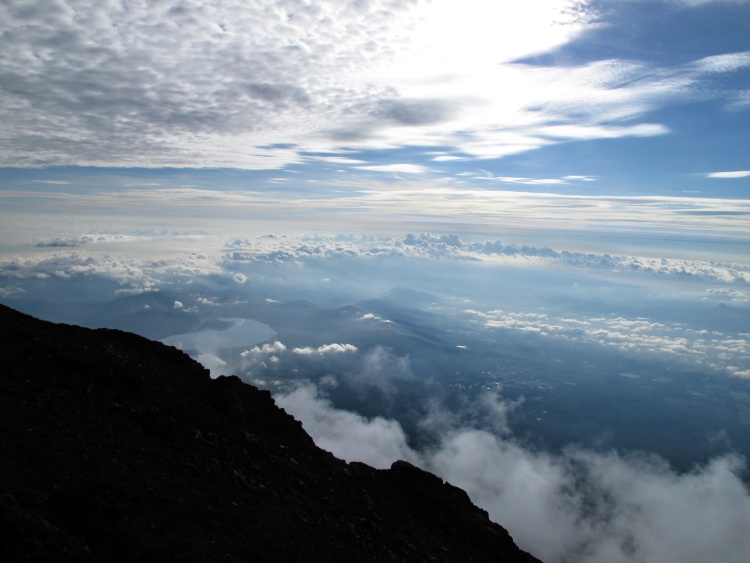
When you reach the summit of a mountain, you must always keep in mind that you are only halfway through.
The descending route on Mount Fuji is straightforward and fast, but expect to be exhausted and sleepy, possibly dizzy, after the long climb and spending time at a high altitude.
The trail downhill is not the same as the trail up.
The good news is that the return path is much wider, so you can walk at your own pace and won’t be slowed down or pushed by other people because there is plenty of space for everyone.
While descending, be careful and take a turn at the Shita-edoya hut.
The Yoshida and Subashiri trails divide here, so make sure to stay on the right path.
The first hour down from the top was the hardest as we were still at high altitude and feeling tired, but drinking a lot of water and eating some energy snacks kept us going.
Be careful not to slip on the gravel – we saw a few people who lost their balance and fell to the ground.
Cover your face with a scarf or mask because it can get dusty.
The descent on the rocky gravel path is quick because the trail doesn’t get congested.
It took us just about three hours to get down.
What Else to Do in the Area
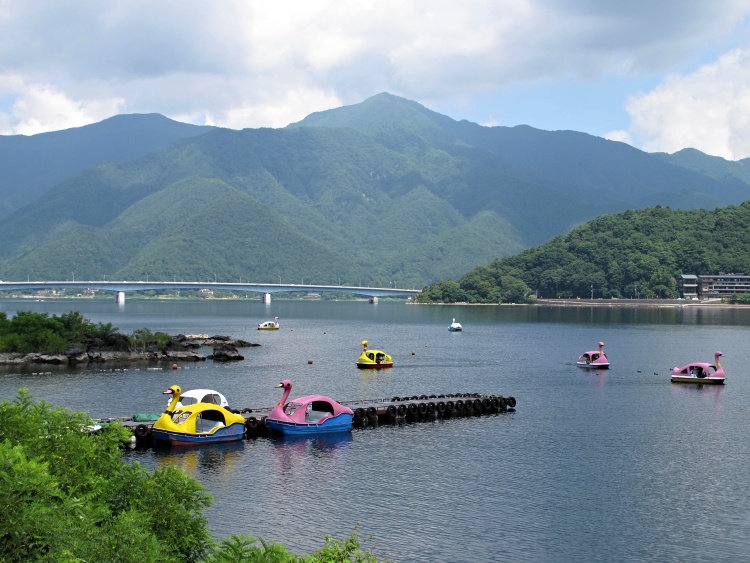
If you still have some time and energy left, you can explore the nearby Fuji Five Lakes Region, which offers excellent views of Mount Fuji.
Take the direct bus from the Fuji-Subaru Line 5th Station to FujiKawaguchiko city (45 minutes ride) to visit the nearest Lake Kawaguchiko, which is the most easily accessible of all the local lakes.
Walk around Lake Kawaguchiko and relax in some of the area’s hot springs (onsen) – your tired body will thank you.
Japanese bath etiquette can be intimidating for foreigners, so it’s a good idea to prepare and find more information online before you go.
If you have a chance, stay in a ryokan (a traditional Japanese inn). It’s not cheap, but it’s so worth it.
If your budget is limited, try it just for one night – that’s what we did.
Staying in an authentic Japanese room and being able to experience the Japanese lifestyle, which we had known just from movies before, was one of the highlights of our trip.
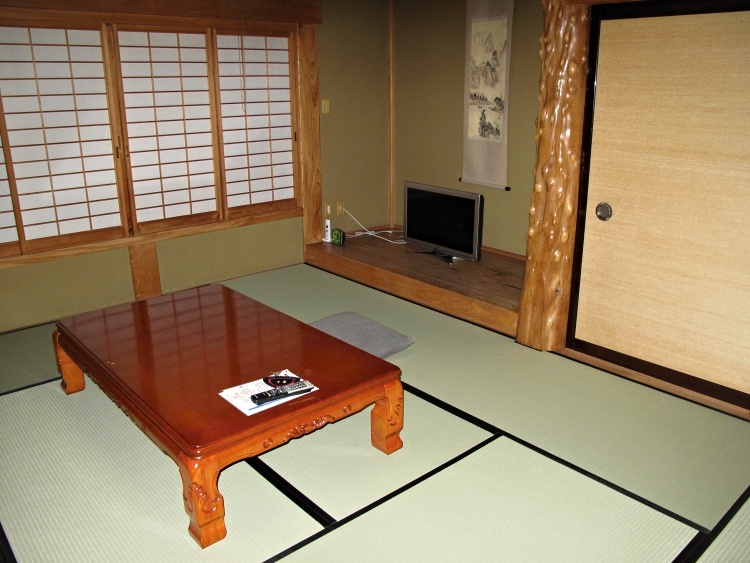
Mount Tenjo is a small mountain located on the shores of Lake Kawaguchiko, and you can get more beautiful views here.
You can either hike or take the Kachi Kachi Ropeway to the top. To experience both, we hiked up and took the ropeway on the way back.
It’s an easy hike, but the signs are only in Japanese, which makes it confusing for foreigners; it can also be a great reason to break the ice and ask the locals.
If you are into roller coasters (like us), don’t miss Fuji-Q Highland.
It’s a popular amusement park with a few crazy roller coasters and other attractions.
The most famous roller coasters in the park have broken a few world records in the past – for the tallest, the fastest, the steepest or the 4th dimension roller coasters.
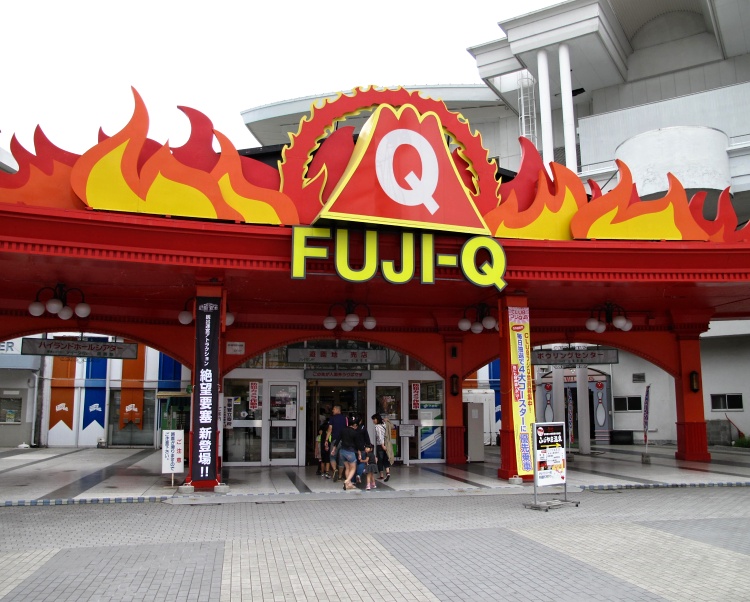
We love roller coasters (the more challenging, the better), and we have visited many theme parks worldwide, but these rides were some of the most memorable ones.
The queues were much shorter than in most theme parks in the USA and Europe, where you could wait hours for a ride that lasted a few seconds.
The rides here were terrific, and we had a great time.
There are more exciting sights in the area, but we managed to visit only the ones mentioned above, and we can recommend them all.
Where to Stay
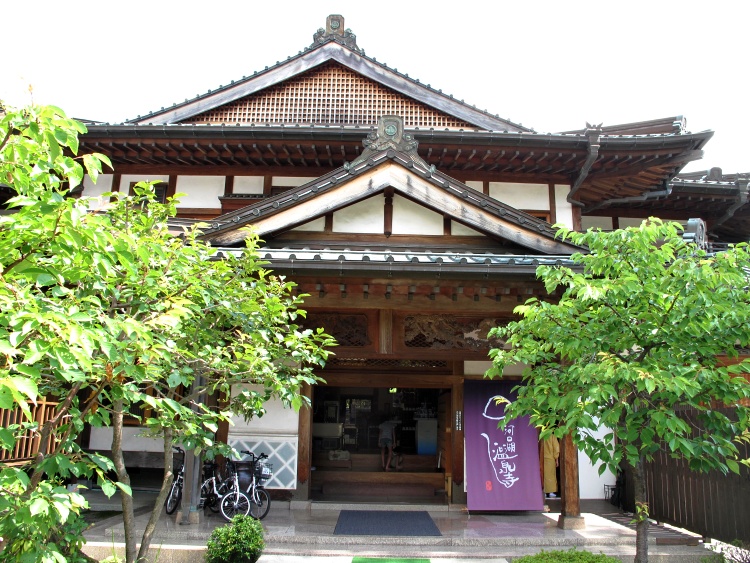
Staying either in Fujikawaguchiko or Tokyo is the most convenient:
FujiKawaguchiko Hotels
Unfortunately, the ryokan that we stayed in is closed now, so we can’t recommend any in particular, but you can find a great selection of hotels and ryokans here.
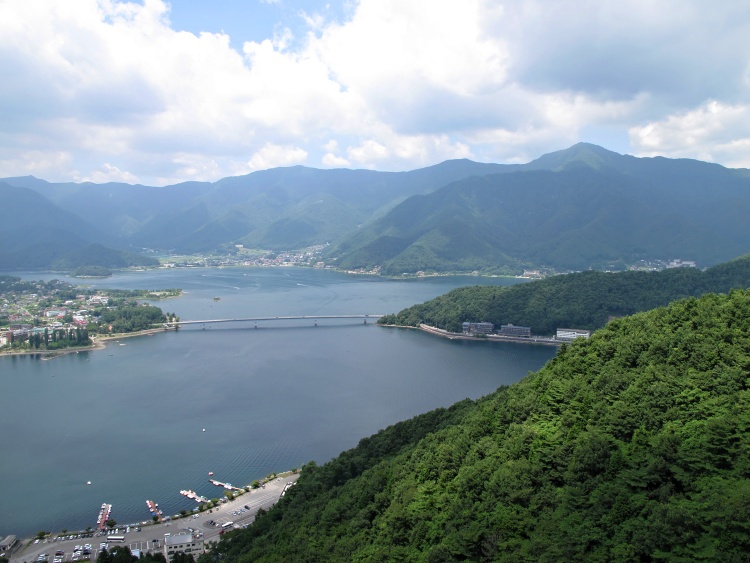
Tokyo Hotels
We stayed in the following hotels in Tokyo:
Hotel Sunroute Plaza Shinjuku – we booked this 4-star hotel to pamper ourselves after the climb. It’s located within walking distance of the Shinjuku Bus Station in Tokyo.
Hotel Villa Fontaine Tokyo-Nihombashi Mitsukoshimae – a good budget hotel with decent rooms and a good breakfast.
Hotel Mystays Premier Narita – a good airport hotel with a free shuttle bus to the airport.
You can also check Airbnb for more accommodation provided by local hosts.
More Tips
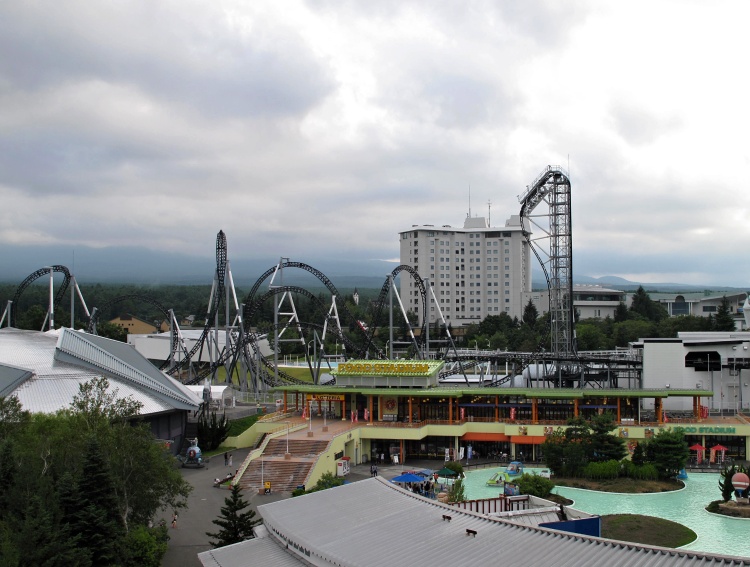
These tips will save you more money, time and energy:
- Get well prepared and buy all you need before you head to Mount Fuji – it’s expensive to buy it there
- Check your climbing gear before you leave, and be ready for all types of weather as it can change fast
- Pack light
- A headlamp is a good idea because you will often be using both hands to climb over boulders and rocks
- If you decide to stay in one of the mountain huts, make the reservation before you go to avoid disappointment because the places are limited
- Allow more time for the climb – even if you are fit, the crowds will slow you down (consider at least 6-7 hours up and 3-4 hours down on the Yoshida Trail)
- Add an extra 60-90 minutes if you want to walk along the rim of the volcano on the top
- Drinking plenty of fluids and taking regular breaks will help you to deal with the altitude sickness (if you experience any), and you might also get some pills for the usual symptoms in advance (just in case)
- Collect the card with the wi-fi connection details at the 5th or 6th Station to be able to use free internet on the summit
- You can buy a walking stick at the Fuji-Subaru Line 5th Station and have it stamped all the way up for a fee
- There are no mountain huts on the way down, so make sure you have enough food and drinks left for the descent
- You can find the bus timetable from Shinjuku here and Kawaguchiko here
- If you want to explore more of Japan on your trip, make sure you get the Japan Rail Pass online before you go – it’s the most economical way to travel around Japan
Climb or Not to Climb?
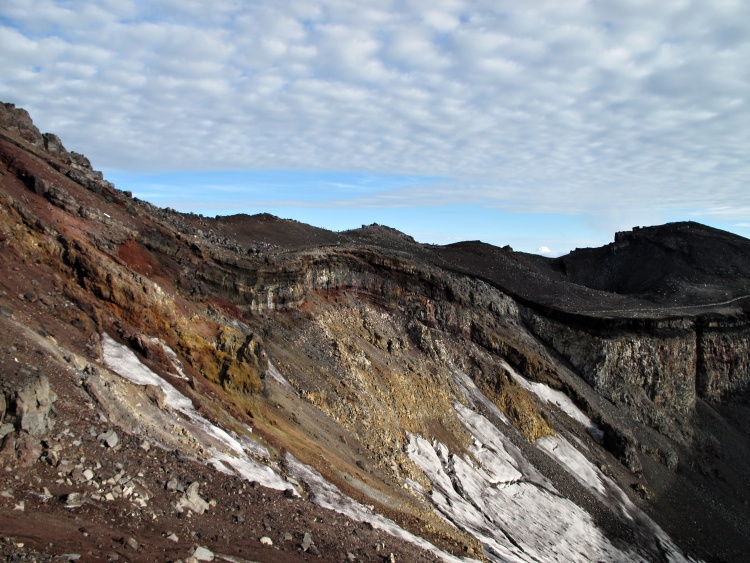
Climbing Mount Fuji is a great achievement. You don’t need to be a tough mountaineer. Just an average fitness level and a bit of excitement will do.
But don’t expect a quiet experience. Mount Fuji is a busy mountain, so try to avoid the busiest days and be ready for the crowds.
The night climb is an ultimate adventure, and there is nothing to be scared of because there will be many people around you all the time.
Watching the sunrise from the top of such an iconic mountain is so beautiful and rewarding.
Climbing Mount Fuji is also another reason to visit Japan – a fascinating country with unique nature, traditions, culture and food, not to mention welcoming people.
We hope that you will enjoy the climb as much as we did!
Have you climbed Mount Fuji or any other exciting mountain yet? Let us know!

